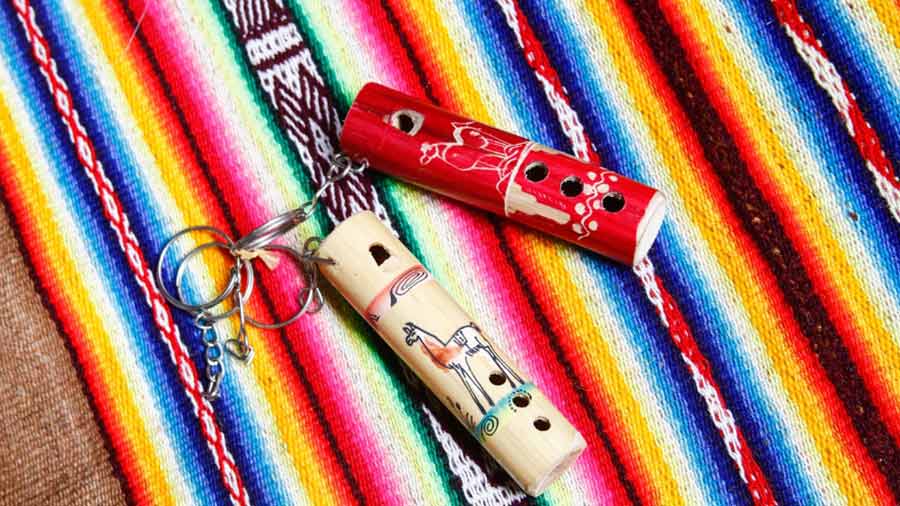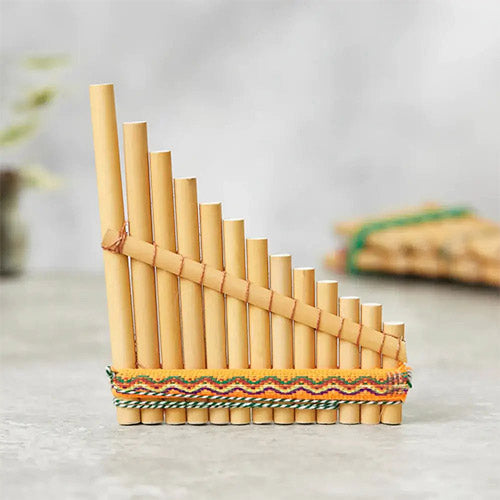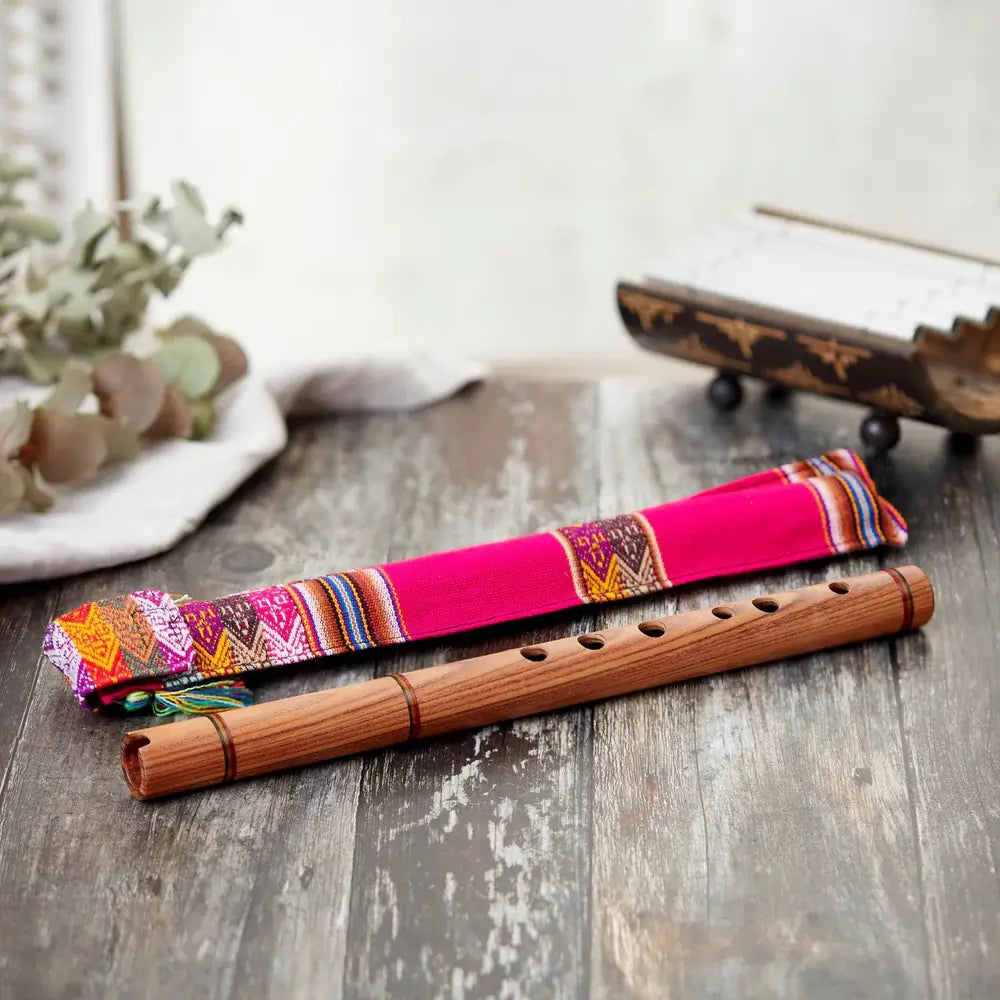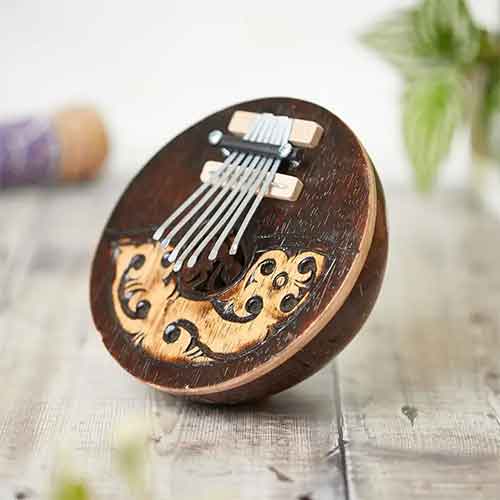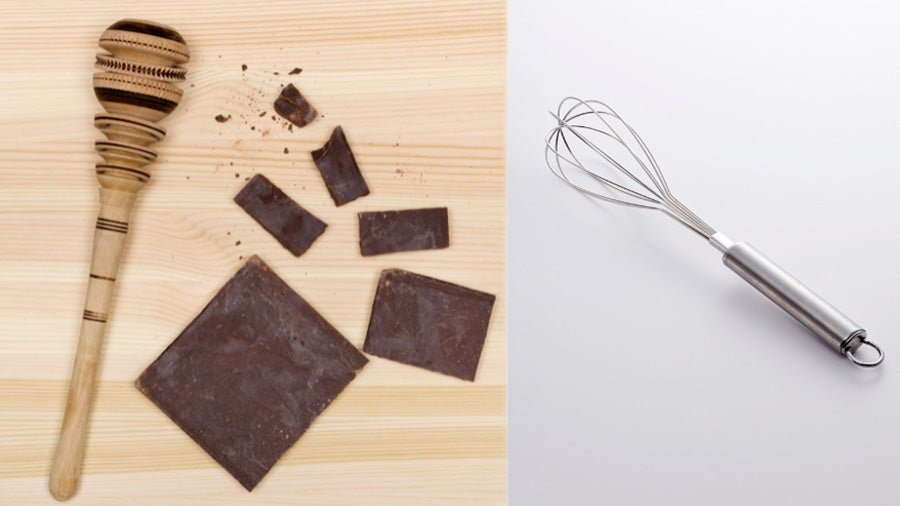The Peruvian Native Flute is known for its beautiful sound. The instruments origin traces back to ancient South American civilisations like the Moche, Nazca, and Paracas, long before the Inca Empire. These early wind instruments were made from bones, reeds, and later woods and metals, symbolizing a deep connection with nature. In Native American culture, the flute holds a sacred place, often used in rituals and storytelling. In this guide, I’ll share insights on the history and tips for purchasing a Peruvian flute.
Other Names for the Peruvian Native Flute
Over time, the Peruvian Native Flute has been known by several names, each reflecting a different aspect of its identity.
Quena Andean Flute
★★★★★ - "Excellent quality, the sound of the Andes...an extremely beautiful flute!" - Verified Buyer
The most recognised variant, known for its open-ended design and notched mouthpiece, offering a traditional Andean sound. This handmade woodwind instrument comes complete with a case.
You can purchase the Quena Andean flute here.
Zampona Pan-Pipes
A set of multiple pipes that create a polyphonic harmony that is often associated with layered melodies.
Buy the Double Zampona Panpipes here.
Peruvian Tarka Flute
Distinguished by its rectangular body, this flute produces a deeper tone that adds variety to the native flute family.
Order the Peruvian Tarka Flute now.
How Peruvian flute are made
If you're interested in crafting a Peruvian Native Flute you will need to gather the necessary materials, tools and safety equipment. It is recommended that only professional woodworkers or manufacturers work with hand tools as they can be dangerous. Health and safety should be the main priority to keep yourself safe. If in doubt consult with a professional and do not try this at home. This is the rough process;
- Select and prepare the wood: Choose a straight piece of wood and hollow it out to create a smooth bore.
- Create finger holes: Cut and measure the holes for accurate musical notes.
- Fine-tune and test: Adjust hole size and placement to achieve the right pitch and timbre.
- Refine the sound: Play each note, adjust as needed, and explore chords to perfect the flute and deepen your musical connection.
Famous Peruvian Flute Covers
Peruvian flute music has found its way onto the world stage through several famous covers. Songs like "El Condor Pasa by Simon & Garfunkel, showcase the instrument's global appeal. These covers often merge traditional Peruvian sounds with contemporary music styles, introducing the flute to new audiences and cementing its place in popular culture.
If you're starting on the Peruvian flute, plenty of resources are available online. Beginner-friendly video tutorials can guide you through the basics of playing and teach you easy songs. These accessible lessons make it easier than ever to start your journey with the Peruvian flute and join the community of players worldwide who appreciate its unique sound.
Recreating popular melodies on the Peruvian flute can be an enriching experience. Whether it's a timeless folk tune or a modern pop song, the flute's versatility allows for a wide range of expression. By mastering the instrument's techniques and exploring its range, you can bring a new dimension to well-known songs and make them your own.
Famous Peruvian Flutists
The world of Peruvian flute music is graced by masters such as Andre Rieu, Gheorghe Zamfir, and David Doring, who have each contributed to the instrument's prominence. Andre Rieu's classical interpretation, Zamfir's mastery of the pan flute, and David Doring's dynamic performances have inspired countless individuals to take up the flute. Their dedication and skill showcase the instrument's potential for both complexity and beauty.
Where to Buy a Peruvian Flute?
Discover a Peruvian native flute that is handmade, authentic, has unique tones, and therapeutic benefits. You can shop for our collection of Peruvian Flutes here.
Peruvian flute materials
When considering buying a Peruvian flute, the first aspect to contemplate is the material. The material not only influences the sound but also the aesthetic and longevity of the instrument. There are two main types of materials used in crafting these flutes: ceramic and wood. Each material brings a different timbre and cultural significance to the instrument.
Ceramic Flutes

Ceramic flutes are known for their rich and earthy tone. The density of the ceramic provides a unique resonance that other materials cannot replicate. These flutes are often intricately painted or glazed, showcasing the vibrant Peruvian culture. When playing a ceramic flute, I feel connected to the ancient traditions of Peru, as ceramics have played a significant role in their artistic history.
You can buy a Peruvian Ceramic Flute here.
Wooden Flutes
Wooden flutes tend to have a warmer and more rounded sound. The type of wood can affect the flute's characteristics, with options ranging from softwoods to hardwoods. Carved wooden flutes often feature traditional designs that tell stories of the Andean people and their environment.
Peruvian flute designs
The design of a Peruvian flute is not only about aesthetics but also about functionality and cultural representation. Each design element serves a purpose: to produce a specific sound or to convey a story or tradition through its imagery.
Many flutes have specialised carvings or paintings passed down through generations. These designs can depict animals, nature, or mythological figures significant to Peruvian folklore. I feel a deeper connection to the instrument by choosing a flute with these designs as if I'm holding a piece of Peruvian history and mythology.
While traditional designs are prevalent, modern interpretations have also emerged, blending contemporary aesthetics with classic styles. Design largely influences visual appeal and also impacts sound. The size of the finger holes, the shape of the mouthpiece, and the flute's overall dimensions will determine its range, pitch, and tonal quality. It's crucial to choose a design that not only looks beautiful but also meets your sound expectations and playability requirements.
Peruvian Native Flute (Frequently asked questions)
How Much Does a Peruvian Flute Cost?
The price of a Peruvian flute can vary based on material, design complexity, and the artisan's reputation. Handcrafted flutes with detailed designs and high-quality materials tend to be more expensive due to the time and skill involved. Prices typically range from £15 to £60 GBP. It's a good idea to compare prices and watch for deals, but be wary of unusually low prices, as they may indicate lower quality or inauthentic products. Setting a budget and understanding what affects the cost will help you find the best value.
What is the Peruvian flute called?
The Andean pan flute comes in a variety of shapes, sizes, and tunings, each designated with its unique name. Generally, in the Aymara language, it's referred to as the siku, in Quechua as antara, and in Spanish, it's known as the zampoña. Furthermore, distinct sizes of sikus (with at least four variations) are identified by their individual names.
What is the national instrument of Peru?
The charango features five strings and is Peru's national instrument resembling the mandolin and ukulele. When plucked, it adopts a harp-like quality, yet when strummed, it produces a more robust and rhythmic resonance.
What is the Peruvian wind instrument?
Peruvian wind instruments primarily comprise two types: panpipes and flutes. These instruments, rooted in Native Andean culture, are crafted to perform tritonic, pentatonic, and hexatonic scales. However, some modern musicians utilize instruments tailored for European diatonic scales.
What is the difference between quena and Quenacho?
The quenacho, also known as "kenacho" in English, is a larger, lower-toned variant of the quena, crafted similarly. It's tuned to the key of D, with D4 as its lowest note, a perfect fourth below the quena's range.
What types of flutes are in Peru?
As well as the Tarka flute, the Quena is a traditional end-blown flute from the Andes, often referred to as the flute of the Incas. Typically crafted from bamboo, in Peru, they are occasionally made from the bones of llamas or condors, resulting in a completely white appearance!

